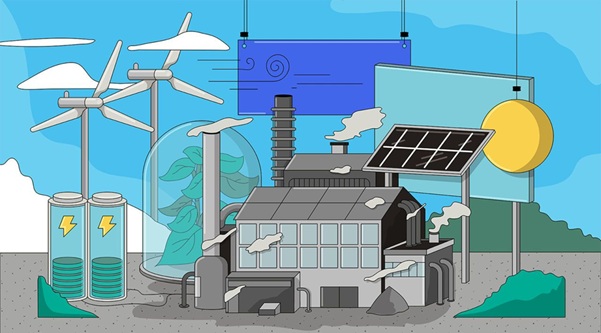
- The industrial sector is the backbone of India’s economy — it is a major source of employment, production, and exports.
- However, this sector also significantly contributes to India’s greenhouse gas (GHG) emissions.
- To address climate change and achieve the “Net Zero Emissions” target, decarbonising India’s industrial sector has become critically important.
Current Status of Industrial Emissions
According to India’s Fourth Biennial Update Report (BUR):
- Industrial Processes and Product Use (IPPU) contribute 8.06% to the country’s total emissions.
- The steel industry alone accounts for approximately 12% of India’s total CO₂ emissions, making it the world’s largest carbon-emitting manufacturing sector.
- Around 60% of industrial energy consumption still relies on conventional fuels (coal, oil, gas).
- Advanced technologies such as Carbon Capture, Utilisation and Storage (CCUS) are still in the early stages and need wider adoption.
Key Challenges in Decarbonisation
- Limitations of Green Finance: Investments in green projects are considered high-risk, restricting financial flows.
- Technical and Infrastructural Barriers: Facilities such as EV charging stations, green hydrogen distribution networks, and industrial upgrades remain insufficient.
- Scarcity of Critical Minerals: Domestic reserves of minerals like lithium and cobalt, essential for electric vehicles and energy storage technologies, are limited.
- Policy Coordination Gaps: Improved coordination is needed among the ministries of energy, coal, and industry to ensure smooth policy implementation.
Global Perspective
India is actively participating in industrial decarbonisation not only domestically but also on the global stage:
- Industrial Deep Decarbonisation Initiative (IDDI) – 2021: Co-led by the UK and India, this initiative encourages energy-intensive industries to adopt clean technologies.
- Global Matchmaking Platform (GMP): Connects industries, investors, and policymakers to promote collaboration and innovation.
- Energy Transition Expert Group: A global expert panel providing policy guidance on industrial energy transitions.
Key Initiatives in India
- Perform, Achieve and Trade (PAT) Scheme: Incentivises industries to implement target-based improvements in energy efficiency.
- National Green Hydrogen Mission: Promotes green hydrogen production to reduce fossil fuel dependence in steel, fertilizer, and chemical sectors.
- Green Steel Strategy: Utilises renewable energy and hydrogen-based processes in steel manufacturing.
- SWAGRIHA Model: Encourages environmentally-friendly and cost-effective housing in small enterprises and the construction sector.
Way Forward
- Ministerial Coordination: A shared ‘Green Transition Coordination Framework’ should be developed between the Ministry of New and Renewable Energy (MNRE), Ministry of Power, and Ministry of Coal.
- Regulatory Reforms: Environmental Impact Assessments (EIA) and Environmental Management Plans (EMP) for emission-intensive industries should be made more transparent and stringent.
- Green Investment Incentives: Alternative financing sources should be created through green bonds, tax incentives, and public-private partnership (PPP) models.
- Technological Innovation: Indigenous R&D should be promoted to build self-reliant frameworks for CCUS, hydrogen storage, and energy efficiency technologies.
Conclusion
- Decarbonising India’s industrial sector is not only a means to achieve climate goals but also a driver of economic opportunities, technological innovation, and green job creation.
- “Green Industries, Green Jobs, and Green Economy” — this triad can guide India toward a sustainable industrial future.



